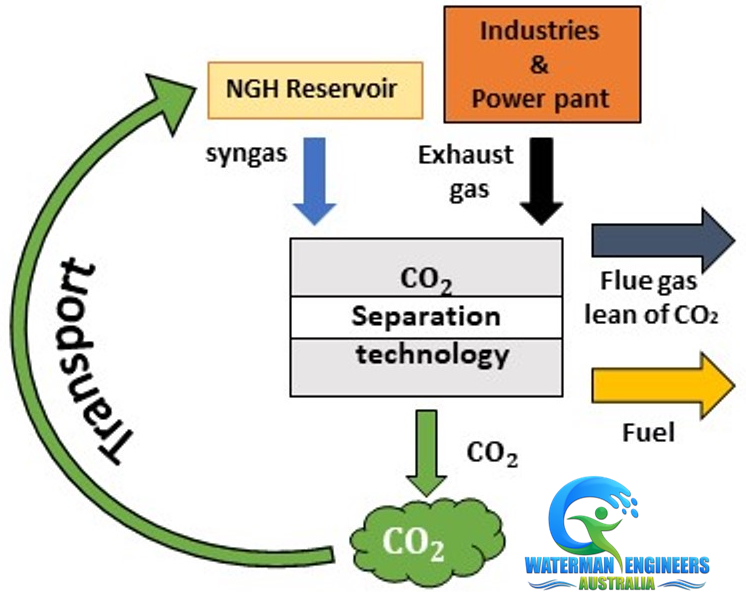

Carbon Seize Storage (CCS) represents a pivotal technologies within our struggle towards local climate change. It can be a technique that captures carbon dioxide (CO2) emissions from resources like power plants and industrial processes, avoiding CO2 from getting into the environment. This know-how is critical for mitigating the effects of global warming and protecting a sustainable surroundings.
What exactly is Carbon Capture Storage?
CCS requires capturing CO2 emissions at their source, transporting them, and securely storing them underground or in other products. The principle is not new; it has roots dating back again to the twentieth century when experts first started Discovering techniques to scale back atmospheric CO2.
Forms of Carbon Seize Systems
Pre-combustion Capture
This process requires changing fossil fuels right into a gasoline combination made up of CO2, and that is then separated before combustion.
Post-combustion Capture
Right here, CO2 is removed from flue gases once the fossil fuel is burned.
Oxy-gasoline Combustion
This method makes use of oxygen in lieu of air for combustion, causing flue gases that are generally drinking water vapor and CO2, earning CO2 separation simpler.
How can Carbon Capture Operate?
The process commences with capturing CO2 emissions using several systems like chemical solvents, membranes, or adsorption approaches. Immediately after seize, the CO2 is compressed and transported, generally through pipelines, to some storage website.
Carbon Storage Methods
Geological Storage
Consists of injecting CO2 into underground rock formations, which include depleted oil and fuel fields or deep saline aquifers.
Mineral Carbonation
This process converts CO2 into secure minerals by reacting it with naturally transpiring oxide minerals.
Benefits of Carbon Seize Storage
Environmental Benefits
CCS substantially lowers greenhouse fuel emissions, helping combat weather change.
Economic Impacts
It can develop jobs during the emerging inexperienced technologies sector and support industries transition to cleaner operations.
Issues and Limits
Technological Problems
Capturing and storing CO2 competently and safely and securely is technically complicated.
Economic Barriers
The large expense of CCS technologies and infrastructure is a big hurdle.
Coverage and Regulatory Challenges
Lack of extensive insurance policies and rules can impede CCS deployment.
Carbon Capture in Motion: Situation Studies
Industries like steel, cement, and energy generation are significantly adopting CCS, with various thriving projects demonstrating its feasibility and Advantages.
Future of Carbon Seize Storage
Revolutionary technologies are emerging, promising extra economical and price-powerful CCS answers. Predictions advise an important part for CCS in upcoming local weather methods.
World Carbon Capture Initiatives
Governments globally are employing guidelines and incentives to promote CCS, with international collaborations fostering its world wide development.
General public Notion and Acceptance
Public know-how and acceptance are essential for your success of CCS. Reports display various levels of consciousness and concerns that will need addressing.
The Role of Carbon Capture in Sustainable Development
CCS inbound links directly to reaching Sustainable Advancement Goals, particularly when built-in with renewable Electricity sources.
Comparing CCS with Other Weather Adjust Remedies
While not a silver bullet, CCS complements renewable Electrical power and also other emission reduction strategies, forming a holistic method of tackling weather improve.
Schooling and Recognition
Elevating awareness and giving schooling on CCS is important for its wider acceptance and implementation.
Conclusion
Carbon Capture Storage is a vital technological innovation inside our arsenal towards local climate change. In spite of problems, its integration into our weather tactic is very important for a sustainable future. The ongoing improvement, innovation, and community aid for CCS is going to be crucial in pinpointing its accomplishment and effect.
FAQs
What is Carbon Seize Storage?
Carbon Seize Storage is a technological innovation that captures CO2 emissions from industrial resources and outlets it to stop it from coming into the atmosphere.
Why is CCS essential?
CCS is vital as it can help decrease greenhouse fuel emissions, enjoying a substantial function in mitigating weather change.
What are the main challenges going through CCS?
The principle challenges include things like technical Carbon Capture Equipments Manufacturer complexity, substantial prices, and the need for detailed policies and polices.
Can CCS function together with renewable Power?
Indeed, CCS can enhance renewable Electrical power resources, forming an extensive method of cutting down emissions.
So how exactly does the public check out CCS?
Public notion differs, with a will need for increased awareness and schooling to foster acceptance and help for CCS technological know-how.
Waterman Engineers Australia is actively involved with addressing carbon-connected worries by way of numerous innovative techniques and commitments. The business specializes in carbon capture and storage (CCS), employing many approaches to capture carbon dioxide (CO2) emissions. These tactics contain write-up-combustion capture, exactly where CO2 is faraway from the air following fossil fuels have been burned, particularly in electric power crops and factories. Additionally they use oxy-gasoline combustion, a process of burning fossil fuels within an setting of pure oxygen, generating CO2 capture easier as a result of ensuing flue gasoline being predominantly composed of CO2 and water vapor.
Besides these technological solutions, Waterman Engineers Australia is dedicated to the "Race to Zero" initiative, aligning With all the Science-Based Concentrate on to reduce carbon emissions. This commitment is an element of a worldwide hard work to obtain Internet-zero carbon emissions by 2050, in step with the United Nations Framework Convention on Local climate Transform. Waterman's methods incorporate embedding whole-everyday living carbon and round overall economy tactics in their advisory solutions and challenge shipping and delivery procedures. This holistic approach requires prioritizing reduced-carbon products, reduced and zero carbon Electrical power options, and economical design to reduce the volume of constructing products.
On top of that, Waterman Engineers Australia is developing equipment to aid customers in handling local climate resilience and complying with local climate-connected restrictions. These tools contain Climatespace, which builds on their existing Greenspace platform to provide a repository for client’s climate obligations as well as a program to stay along with new related legislation, polices, and reporting prerequisites.
By these initiatives, Waterman Engineers Australia is building sizeable contributions to mitigating weather modify by lowering carbon emissions and building sustainable engineering solutions.
To learn more on Waterman Engineers Australia's carbon-connected answers, you could stop by their Web site right here as well as their determination for the Race to Zero below.
